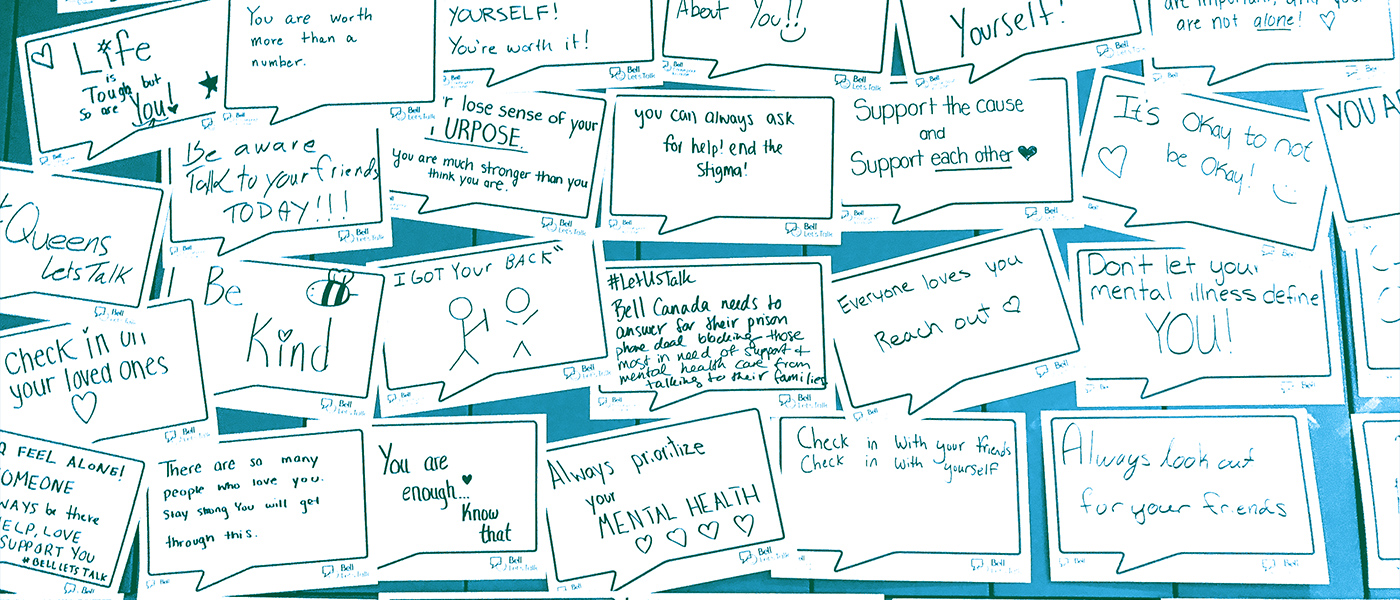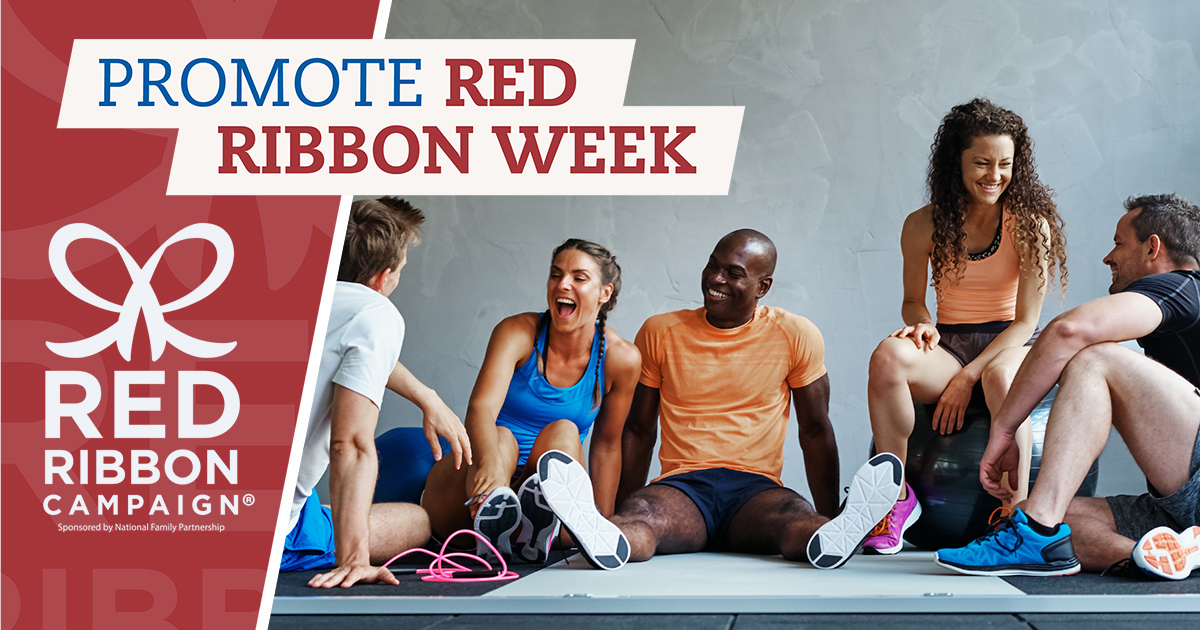If you follow the NIRSA Canada social media accounts—Facebook, Twitter, Instagram—or a large number of our Canadian institutions or members, it’s likely you noticed the hashtag #BellLetsTalk going around a LOT on January 29. For some, it was simply about making a post to raise awareness. For others, it was an effort to raise as much awareness as possible. If you follow my personal Twitter account, odds are you wish you didn’t after roughly 100 tweets or retweets with the #BellLetsTalk hashtag.
So what is #BellLetsTalk? And why did so many athletics and recreation departments in Canada get behind this initiative? Disclaimer for our American friends: Many of our recreation departments are paired with Athletics under whatever campus body we’re with. Another disclaimer: Bell, the company which started this all, is one of the largest telecommunications companies in Canada.
The Bell Let’s Talk Initiative began in 2010, sparking a much-needed conversation about mental health and mental illness—specifically in Canada. Many famous faces, but also just people we see every day in our own lives, have come forward in the ten years since with their stories of mental illness and mental health struggles. The goal has always been twofold—to start a productive and informative conversation, and to raise money towards mental health initiatives.
Every year on #BellLetsTalk Day, Bell donates five cents ($0.05) towards Canadian mental health initiatives for every interaction that takes place with the #BellLetsTalk hashtag. On January 29, 2020, we piled up a staggering 154,387,425 interactions with that hashtag. That’s right, in a single day, #BellLetsTalk was sent around social media over 154 million times! That’s tweets, retweets, Instagram posts, Facebook posts, video views, and even the use of a Snapchat filter. As a country—and no doubt with some help from some of our international friends—we were able to persuade Bell to donate $7,719,371.25 towards Canadian mental health initiatives this year!
Bell Let’s Talk is built on four key pillars: anti-stigma, care and access, research, and workplace health. There doesn’t have to be a specific day to support these pillars and act; but having such a day can be a great opportunity to illustrate what we’re doing with these pillars.
Why do we do it?
There are plenty of ways to raise awareness around mental health and mental illness, so why do we go all in on #BellLetsTalk? Part of it is visibility. When a cause has celebrities, athletes, media personalities, and other highly recognizable figures putting their names or faces behind it, it tends to get noticed. As an individual, it can be a chance for us to share our story, or to show we support those close to us who are struggling. For some, it can be as simple as wanting to do your good deed for the day and contribute to a cause. There are even those who state outright that they participate to make Bell shell out money after having paid bills to them for so long.
As an institution, athletic, or recreation department, the consensus tends to be around showing our students, our patrons, our coworkers, and our colleagues that we support them. That we see them and their struggles, and that it’s okay to need support. There are outliers of course. There are departments who don’t show their support publicly because they routinely offer programs geared towards student mental health, and so don’t need to take one specific day to do so. Lack of participation can really stem from various other reasons I don’t care to speculate on.
There are others who see January 29 as a prime opportunity for their own promotion or financial gain; they attach sponsors to #BellLetsTalk games or programs with the hope of drawing in more people to their facilities to buy tickets or to register for their programs. But, by and large, we participate because we care. And on a day when mental health is made so visible, when people feel it’s safer to share their stories and reach out, we want to show as much support as we can.
How do we do it?
The “how” seems to be pretty consistent across our campuses. We get some pretty nice toques (also known as “beanies” for our American counterparts), we hold up signs that say things like “You Matter” and “It’s okay not to be okay.” We take group photos, we sign banners, we have displays to promote the day, and we put #BellLetsTalk on our social media pages. Some of us offer free programming with a focus on mental health, some of us share stories or tips and tricks we use when we’re struggling. Some offer support, or—at the very least—will provide directions to the proper support services where needed.
The trap we all fall into is how to keep the conversation going beyond this one day a year. We show our support, we offer the free programs, we take the time out of our day to be in the photos, to sign the banner, to share stories, or listen as others share their stories. But then January 30 rolls around and the promotion pieces are gone, the conversations begin to slow or stop, and we return to our normal working lives.
The #BellLetsTalk posts endure if you look for them, but they’re quickly hidden below the usual gameday announcements, program highlights or registration dates, and all the other usual social media posts coming out of athletics and recreation departments. This doesn’t mean we don’t care, or that we don’t want people to speak out about their struggles. It doesn’t mean we don’t want to offer support where, when, and how we can. But so much emphasis is put on this one day that we don’t see—nor should we necessarily expect to see—the same level of mental health promotion outside of January 29.
Maybe the conversation continues. Maybe the conversation ends. The point has been made, the tickets have been sold, the programs have been promoted. But the message has been sent that “we care.” And for some, that’s enough. For others, we try and continue to spread the message, to remove the stigma, to provide our students, members, and colleagues with whatever support we’re able to so that they can be their best selves. The small things matter, and the small things are how we continue to spread this message and keep the conversation going—albeit indirectly.
Something as simple as having an open-door policy for your staff to come talk to you shows a level of concern for their wellbeing outside of work performance. Attending workshops or training sessions geared towards mental health helps us continue to learn and better combat the stigma surrounding mental illness. So, let’s not allow the conversation to come to a full stop. Continue discussing mental health with staff and clients, continue running workshops and programs, and continue to spread the message that everyone is in this together.
Take care of yourselves so that you can bring the best version of you to your role—whatever it is. And remember that everyone has personal battles they’re dealing with that we may not know about. Open dialogue and sharing among colleagues are some of the best ways we can end the stigma around mental health in the workplace. So, let’s keep working towards it.
Zack Sephton is currently a Coordinator with Facilities & Operations at Queen’s University; you can email him at zack.sephton@gmail.com.







